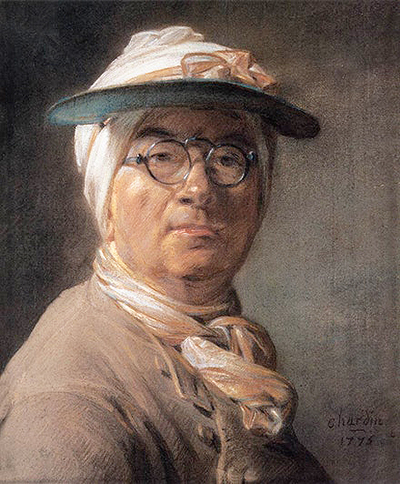One of the true masters of still life painting, Jean-Baptiste-Siméon Chardin remains a highly regarded French artist from the 18th century.
Here we examine his qualities as an artist and the techniques that he used to create incredibly life-like depictions of everyday objects.
Unique Style
Despite his precise recreations on canvas, his paintings are still immediately recognisable. His precision of colour and light was highly unusual, leading some critics of that era to stand in astonishment when viewing his latest artworks. He made his work look effortless but in reality he would consistently amend his artworks again and again, until he finally arrived on a composition layout with which he felt comfortable.
The uninitiated would merely see a collection of objects placed together in a relatively random way, but Chardin would experiment with different arrangements directly on canvas. This was discovered through the x-raying of several of his paintings, which unveiled earlier work that had since been worked over. See The Ray, for an example of this.
Specialist in still life
Many of this artist's still life paintings were constructed indoors, often within his own home with his personal kitchen equipment. He also produced a large number of genre paintings that fitted closely with those same items, in capturing scenes of everyday life within domestic settings.
There were some similarities in that regard with the work of Dutch master, Vermeer, though Chardin's painting style was naturally a little different, because of the respective art movements and backgrounds from which they each came. Both artists appreciated the lives of those working tirelessly within the home, such as maids, as well as the children who would pass their time with playful activities which continue to charm us today.
Chardin announced himself on the world stage after appearances at the Royal Academy, followed by many exhibitions at the Salon but it would be wrong to assume that he go to that point in a conventional manner. Relatively unknown, a small exhibition of his work as a young man was spotted by a prominent artist of the period, purely by chance, and from that point onwards he was to receive new opportunities.
Based in the Louvre
He was eventually gifted his own studio within the grounds of the Louvre but had spent many years forging a small income from catering to the whims of a variety of local commissioners. He lacked artistic freedom at the point and was purely using his skills to be able to purchase the types of items that appeared in many of his still life paintings. It was perhaps by around his late thirties that the artist had really established himself and was able to enjoy a level of autonomy within his career for the first time.
This French painter would then make use of other artists to promote his work through engraving reproductions. These proved popular and allowed his original paintings to meet a new audience for the first time. François-Bernard Lépicié and P.L. Sugurue are two of the more famous engravers who created these reproductions from his original multi-layered oil paintings and set about selling them locally throughout the nation. Whilst they found this to be a profitable venture, it had the additional benefit of building Chardin's own reputation and inspiring many to seek out the original artworks.
Many other European artists have used the same idea to build their own careers, including the likes of William Hogarth whose Beer Street and Gin Lane were distributed throughout the UK and quickly made him a household name, which then allowed him to significantly increase the value of each future commission.
"...I do not finish a painting until it is perfect..."
Strong academic support
Many academics within the 18th century had described Chardin as having an effortless talent for creating these stunning depictions and perhaps that was his intention, with only modern technology unveiling this a charade. He put immense planning into his own technical development and also the way in which each composition was arrived at, but there is no shame in that. So Chardin was human after all!
In one way it makes his achievements all the more impressive, when we consider the hard work that he was willing to put into his career in order to achieve the highest quality possible. He set a benchmark within the still life genre that no-one has since matched, though Cezanne's own contributions were clearly also remarkable, but within a more expressive style that was in line with that later period of French art.
Specialist in painting
Chardin was not particularly skilled as a draughtsman and so would not produce endless sketches prior to commencing his major works. This might explain why he would make so many amendments directly on canvas and this approach did appear to upset some critics of that period, even though many remained completely unaware of the level of effort that he put into each of his paintings.
Pierre-Jean Mariette, for example, appeared to have pre-determined his views, based on the artist's accepted limitations in drawing, and simply proclaimed how labourious he felt Chardin's technique was. He claimed that the painter was attempting to hide his own drawbacks, but many others would take a very different view of this painter and simply appreciate the final artwork and not concern themselves too much with how it was arrived at. Others have also suggested that perfectionism was behind these obsessive sequences of amendments.




